How can you use a pause in a presentation to help ensure that you speak with impact? Many speakers make the mistake of filling every moment of their allotted time with words, but learning how to use the pause can be just as impactful than anything you might say. Using a pause in a presentation can help you achieve your goals, help you overcome any nerves, and help ensure understanding from your audience. Here we will explain how to use the pause in your presentation.
Vaudeville performer of the 1930s, and star of over 70 films, Will Rogers is famous for once saying: “I never met a man I didn’t like”. For most of us that seems unlikely, but Rogers also said, “Never miss a good chance to shut up.” That is advice that every great public speaker, and presenter, understands well. Rogers knew that understanding how to use a pause was a skill more people needed to develop!
The sound of silence can be devastatingly impactful, and beneficial for us in a professional setting and in our private lives. Using a pause at key moments in a presentation can help us to make gains.
Erling Kagge, the Norwegian explorer who became the first person to reach both poles, and the summit of Mount Everest on foot, and has also written nine books, including 2017’s “Silence: In the Age of Noise”. Having once spent over a month walking solo across Antarctica with a broken radio, it is safe to assume that silence is a topic he understands better than most. Kagge says that his search for silence was driven by his developing an understanding of the fact that he had “…a primal need” for it.
In the modern world we are surrounded by constant noise and things can seem chaotic, the hum of strip lighting in the office, traffic, alerts on your mobile, the ping of an email arriving in your inbox, people talking, music in every store you enter. Sometimes these sounds, this chaos, can be comforting. But often it serves only to distract us from things with greater importance, including our own thoughts. The temptation, especially when presenting, can be to fill every second of our allotted time with noise, but is that the best use of the time we have? Or is it better to learn how to use the pause, in order to help us speak with greater impact?
On a visit to Scotland’s St. Andrews University, Kagge was invited to give a lecture, he was given free rein in choosing his topic, and decided to talk about silence. He understood exactly how to use the pause when speaking to an audience.
“I began the lecture with a minute of silence. You could have heard a pin drop. It was stock-still. For the next seventeen minutes I spoke about the silence around us, but I also talked about something that is even more important to me, the silence within us. The students remained quiet. Listening. It seemed as though they had been missing silence.”
Silence is a tool, a tool that when used effectively can create something impactful, or something of real value.
I remember reading about a study that looked at the impact of silence on concentration. Participants were given tasks that required them to concentrate, with either silence, speech, or other noise in the background. The individuals who were working in silence were the ones who experienced the lowest stress levels.
Dr Supriya Blair explains it like this, “Focusing on one thing at a time with one’s full attention can help promote efficiency and calmness amidst activity.” Learning how to use the pause when we speak can similarly help our audience to focus on our message.
What we learn from all of this is that silence is not something that we should run away from when we are presenting, instead we should think about the ways in which we can use silence to our advantage, and about how it might help our audience get the most from our content. Learning how to use a pause when we speak can help us achieve our goals.
A pause can be slotted into your presentation, when you are preparing you should take time to identify important points/phrases and plan pauses to accompany them. Make them an integral part of your practice, deliver the key point, and then pause, counting out up to three seconds. That can seem like a long time when you are standing in front of the mirror, but time passes quickly on stage! It is also a lot shorter than the one-minute silence used by Kagge at the start of his lecture to the students at St. Andrews.
While using a pause for any amount of time when you speak may make you feel uncomfortable, maybe even anxious, it is important to remember that it isn’t you who matters, it is your audience. If you don’t pause, if you don’t give your audience a moment of silence, it becomes a struggle to keep up, and it becomes almost inevitable that you will lose your audience. Pausing allows your audience to take in what you have said, and it helps to create the impression of confidence.
“The right word may be effective, but no word was ever as effective as a rightly timed pause.” (Mark Twain)
You may be asking “When should I pause?”, the right time for the pause is as important as the pause itself. Think again of Kagge starting his speech with a full minute of silence. When you step in front of an audience you have a very short moment in which to make a good impression. This is a good moment to use the pause in your presentation. A minute may be a bit much, but taking the time to breath in, to smile at the audience, and to centre yourself only takes 10 seconds.
A pause can also help you to let the audience know you are shifting between topics, or that you are changing tone. It can help the audience understand the progression of your speech if you use the pause after an introductory statement, or before you make a conclusion. Using a pause at these moments’ signals to your audience that you are about to say something important, something they should listen to, it is the same effect that is used in film, television, and theatre to signal a “reveal”.
Anyone who has ever wasted a rainy Saturday afternoon watching re-runs of “Judge Judy” on television will know that the constant deployment of “filler words” such as “like” drive the formidable adjudicator to distraction. When you are practicing your presentation, it is worth highlighting how often you use “like” or “so”. Recording your presentation on your phone and listening back will help you identify when you could insert a pause.
There may be moments during your presentation when you have told a joke, or shared an anecdote, that has elicited laughter from the audience. That’s a great feeling, but it is important to give yourself time to let the laughter die out before continuing to speak. You don’t want valuable information to be lost in the gales of laughter that are reverberating around the hall! Use the pause. The same thing applies if you are greeted with applause from the audience when you step up to speak, accept it and allow it to fade before you begin your remarks.
If you are inviting questions at any point, you can also use the pause to help you find the correct response. Listen to the question, make sure you have understood it (a pause to think about what has been asked), and then give your answer. We have all been in a meeting when someone has asked a question and the person being asked has interrupted and started to give an answer to the question they thought had been asked…it is uncomfortable, maybe even a little embarrassing…using a pause to make sure you have heard the question, and providing yourself with enough time to understand it, can help you avoid that sort of embarrassment.
Saying nothing isn’t difficult, the difficult thing is knowing when to say nothing. Don’t be afraid to use silence in your speech/presentation, it can elevate it and help to ensure that key messages land and are remembered.
Perhaps one of the very best examples in recent times of a speaker who understood the power of the pause is former President, Barack Obama. As President elect in November 2008, and on the night of his election victory he gave a speech to a large crowd of supporters in Chicago. Right from the start of that speech he used the pause, he embraced silence. Stepping to the podium he allowed time for the cheers that greeted him to fade, then when he opened his remarks with “Hello Chicago” he allowed a few seconds to pass again before beginning his remarks. Throughout that speech he frequently left space for the audience to take on board what he had said, to give himself time to gather his thoughts and emotions, and to ensure that this historic moment was marked with a speech fit for the occasion.
If you know that you are a speaker who just wants to get a presentation done, and who consequently rushes through remarks, there are things you can do to help you embrace the sound of silence and use the power of the pause.
Here is one simple thing you could try today, read out loud from a book, or newspaper article, pausing for a second when you reach a comma. When you come to a full stop, pause for two seconds. At the end of a paragraph, three seconds. This will help make the pauses feel less unnatural and help you to use the pause in your speech to much greater effect.
Remember what Will Rogers said, “Never miss a good chance to shut up.”


